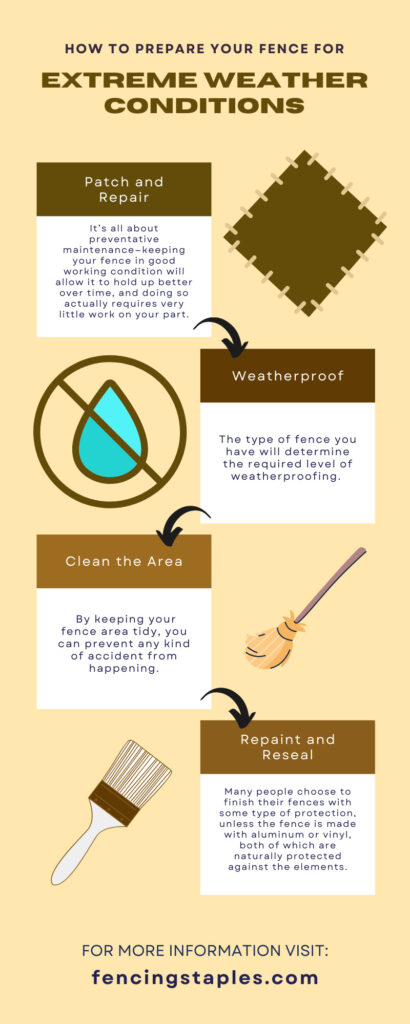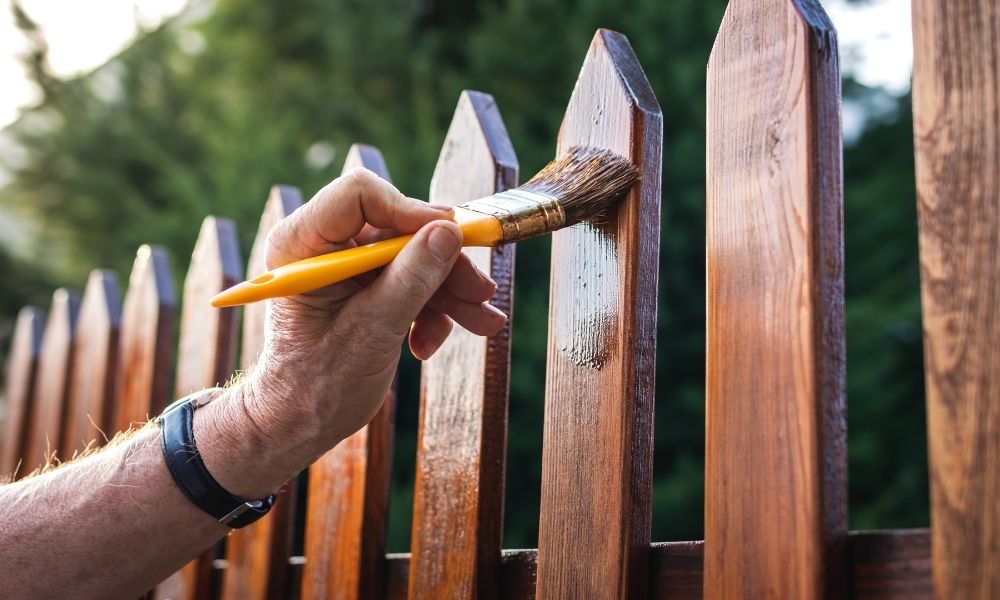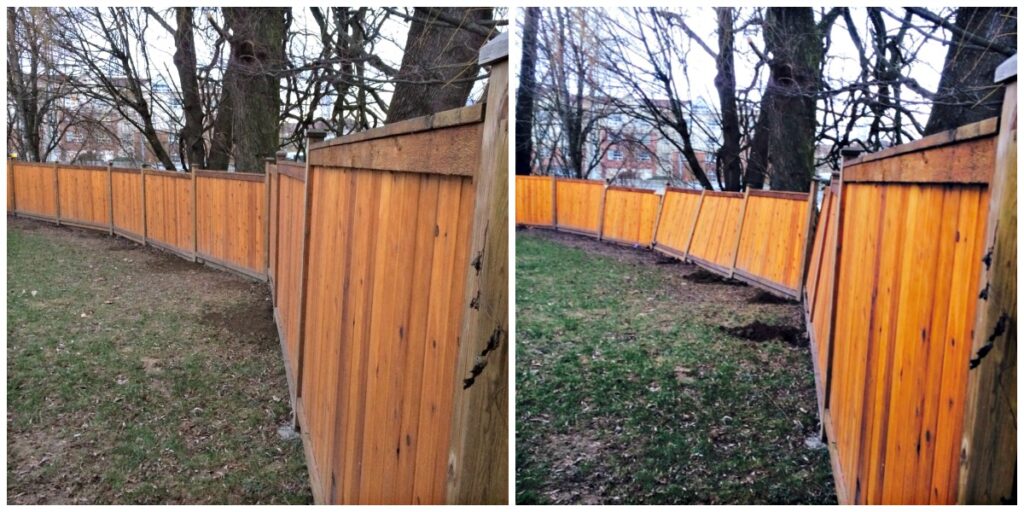They say a good fence makes for good neighbors, but what happens when the weather takes a toll on your fence? That’s where I come in, ready to equip you with all the knowledge and tips you need to protect your fence from the harshest weather conditions. Welcome to “41. How to Protect Your Fence from Harsh Weather Conditions,” where I’ll be diving deep into the intricacies of different fence types, sizes, shapes, and materials, all while providing you with practical advice on maintaining and preserving your beloved fence.
On my blog, “http://fencedude.com,” I’ve made it my mission to offer comprehensive and engaging content about fences. From wooden fences to chain-link fences, vinyl fences to metal fences, I cover it all. In this article series, we’ll explore the benefits and considerations of each fence type, delve into the importance of selecting the appropriate size and shape, and discuss the materials best suited for different weather conditions. By the end, you’ll be armed with the knowledge and tactics to keep your fence standing tall, come rain or shine. So, let’s get started, shall we?
How to Protect Your Fence from Harsh Weather Conditions
If you have a fence around your property, you know how important it is to keep it in good condition. Harsh weather conditions can cause significant damage to your fence if you’re not taking the necessary precautions. In this article, we will discuss ten essential steps you can take to protect your fence and ensure it stays sturdy and durable for years to come.
Choose the Right Material
The first step in protecting your fence from harsh weather conditions is choosing the right material. Different materials have varying degrees of resistance to weather elements, so it’s crucial to select one that will withstand the specific climate in your area.
Consider Climate and Weather Patterns
Before selecting a fence material, take some time to evaluate the typical weather conditions in your area. Does it rain frequently? Is it prone to high winds or snowstorms? Understanding the climate and weather patterns will help you make an informed decision about the most suitable material for your fence.
Opt for Weather-Resistant Materials
When choosing a fence material, opt for ones that are known for their weather-resistant properties. Vinyl and metal fences, for example, tend to hold up well against harsh weather conditions such as rain, wind, and extreme temperatures. Avoid materials that are prone to rot or rust, as they will deteriorate quickly when exposed to harsh elements.
Research Maintenance Requirements
It’s essential to consider the maintenance requirements of each material before making your final decision. Some materials may require regular repainting or sealing to maintain their weather resistance. Research the cleaning and maintenance procedures for each material to ensure you’re prepared to invest the necessary time and effort in preserving your fence’s durability.

Apply a Protective Finish
Once you’ve chosen the right material for your fence, the next step is to apply a protective finish. This will help shield the fence from any potential damage that may occur due to harsh weather conditions.
Clean the Fence Surface
Before applying any protective finish, thoroughly clean the surface of your fence. Remove dust, dirt, and mildew using a pressure washer or scrub brush. Cleaning the fence surface ensures that the finish adheres correctly and provides optimum protection.
Apply Water-Repellent Stain or Paint
After cleaning the fence, apply a water-repellent stain or paint. These finishes not only enhance the fence’s appearance but also provide a barrier against moisture and other weather elements. Make sure to choose a high-quality stain or paint specifically designed for exterior wood surfaces for optimal results.
Consider UV-Protective Coatings
In addition to water repellency, it’s essential to protect your fence from the damaging effects of the sun’s ultraviolet (UV) rays. UV-protective coatings can prevent fading or discoloration caused by prolonged exposure to sunlight. A fence that retains its original color will not only look better but also keep its structural integrity intact.
Regularly Inspect for Damage
To ensure your fence remains resilient against harsh weather conditions, regular inspections are crucial. By inspecting your fence periodically, you can identify and address any potential issues before they escalate into more significant problems.
Check for Loose Boards, Nails, or Screws
Loose boards, nails, or screws can compromise the stability of your fence and make it susceptible to damage from the wind or other elements. Regularly check for any loose fasteners and tighten or replace them as needed. Additionally, if you notice any damaged boards, it’s essential to fix or replace them promptly.
Look for Signs of Rot or Decay
Wooden fences are particularly vulnerable to rot and decay caused by exposure to moisture. During your inspections, probe the wood for softness or hollow sounds, which are signs of rot. If you discover any areas of rotting, it’s crucial to replace those sections to prevent further deterioration.
Inspect for Cracks or Breaks
Cracks or breaks in your fence can provide an entry point for moisture, leading to more substantial damage. Regularly inspect your fence for any signs of cracking or breaking. Small cracks can often be repaired, while severely damaged sections may require replacement to maintain the fence’s structural integrity.

Clear Debris and Vegetation
Clearing debris and vegetation from around your fence is another crucial step in protecting it from harsh weather conditions. Fallen leaves, branches, or overgrown vegetation can trap moisture against the fence, potentially leading to rot or decay.
Regularly clear any debris that accumulates near your fence. Additionally, trim back any vines, bushes, or trees that are in close proximity to your fence. By keeping vegetation away and maintaining a clear space around your fence, you can minimize the risk of moisture buildup and other weather-related damage.
Trim Overhanging Trees
Overhanging trees can pose a significant threat to your fence during storms or high winds. In addition to the potential for falling branches, the constant rubbing of tree limbs against your fence can cause abrasion and weaken the structure over time.
Regularly inspect the area around your fence and trim back any overhanging tree limbs. By keeping trees at a safe distance, you can minimize the risk of damage to your fence caused by falling branches and rubbing.

Secure Loose Boards and Nails
Over time, boards and nails on your fence may become loose or start to deteriorate, making the fence vulnerable to harsh weather conditions. It’s crucial to secure any loose boards or nails promptly to maintain the integrity of your fence.
Regularly inspect your fence to identify any loose boards or nails. Tighten or replace them as needed to ensure your fence remains structurally sound. By addressing these minor repairs early on, you can prevent more extensive damage that may occur due to the weakened structure.
Repair or Replace Damaged Sections
If you notice any significant damage during your inspections, it’s crucial to address it promptly. Whether it’s cracks, breaks, or extensive rotting, damaged sections of your fence need to be repaired or replaced to maintain its structural integrity.
For minor damage, such as small cracks, you may be able to repair them yourself using appropriate materials and tools. However, severe damage may require the expertise of a fence contractor or repair specialist. They can evaluate the extent of the damage and provide the necessary repairs or replacements to ensure your fence remains strong and resilient.

Install Windbreaks or Privacy Netting
If your area is prone to strong winds, installing windbreaks or privacy netting can provide additional protection for your fence. Windbreaks are tall structures, typically made of wood or other sturdy materials, that are strategically placed to redirect or block the wind.
Privacy netting, on the other hand, is a mesh-like material that can be attached to your fence to act as a barrier against wind. It also provides additional privacy for your property. Both windbreaks and privacy netting can help reduce the impact of strong winds on your fence and minimize the risk of damage.
Consider Reinforcements
In areas with particularly harsh weather conditions, it may be wise to consider reinforcing your fence. Reinforcements, such as additional support posts or cross braces, can significantly enhance the stability and strength of your fence.
Consult a fence contractor or repair specialist to assess your fence’s current condition and recommend the appropriate reinforcements. They will have the expertise to determine where additional support is needed to ensure your fence can withstand the harshest weather conditions.

Seek Professional Help
If you’re unsure about how to protect your fence from harsh weather conditions or if you’re facing specific issues, it’s always best to seek professional help. Fence contractors or repair specialists have the knowledge and experience to assess your fence’s vulnerabilities and provide expert advice and solutions.
Consulting a professional can help you address any immediate concerns and develop a long-term maintenance plan to protect your fence from future damage. Their expertise will ensure that your fence remains strong, durable, and resilient against even the most challenging weather conditions.
In conclusion, protecting your fence from harsh weather conditions is essential to ensure its longevity and durability. By choosing the right material, applying a protective finish, regularly inspecting for damage, clearing debris and vegetation, and taking appropriate measures to secure and repair your fence, you can maintain its integrity and safeguard it against the elements. Additionally, considering reinforcements, installing windbreaks or privacy netting, and seeking professional help when needed will provide additional protection. By following these steps, you can enjoy a fence that withstands harsh weather conditions and enhances the beauty and functionality of your property for years to come.
